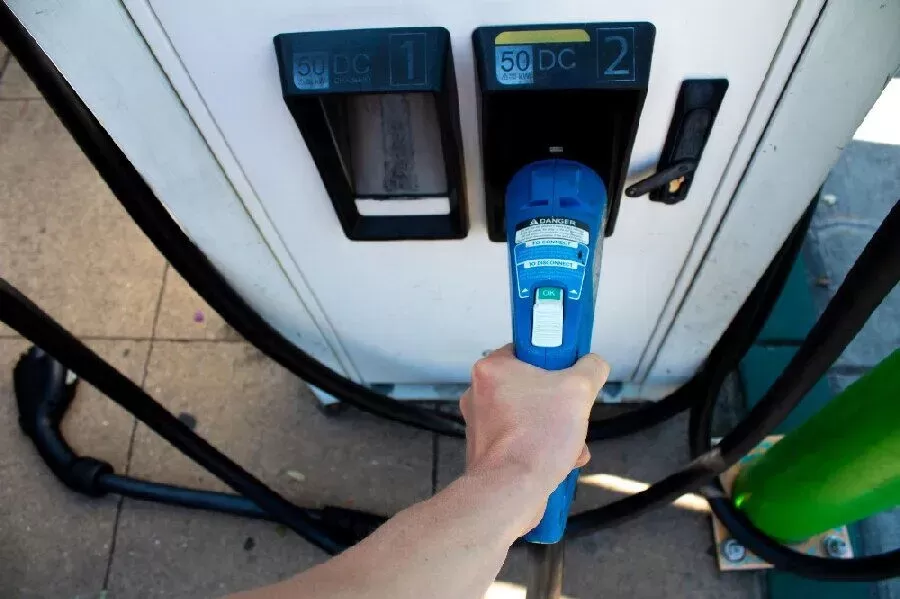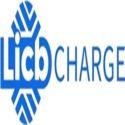Notifications

9 minutes, 25 seconds
-70 Views 0 Comments 0 Likes 0 Reviews

Introduction
As a leading EV charger manufacturer in China, LiCB Charge delivers dependable AC and DC electric vehicle charging stations along with comprehensive charging solutions tailored to various applications.
As electric vehicles (EVs) continue to grow in popularity, a crucial aspect of their success lies in the availability and efficiency of their charging infrastructure. One of the fastest charging options available is DC fast charging, which can significantly reduce the time needed to recharge an EV. However, it's essential for EV owners to understand when and how to use DC fast chargers to optimize charging times and preserve battery life.
In this guide, we will explore how DC fast chargers work, when they should be used, and how they compare to AC chargers. We will also dive into the factors that impact DC fast charging speed and provide advice on how to make the most of your charging sessions.
DC fast charging involves delivering direct current (DC) power directly to an EV's battery, bypassing the vehicle's onboard charger. This method of charging differs from AC chargers (Level 1 and Level 2), which rely on alternating current (AC) and require the vehicle to convert that AC into DC to charge the battery.
Because DC fast chargers deliver power directly to the battery, they allow for much faster charging compared to AC chargers. While AC charging is ideal for everyday use, DC fast charging is designed for situations where time is of the essence.
DC fast chargers are most commonly used during long road trips or when there is limited time for a full charge. These chargers are typically located in public spaces such as highway rest stops, shopping centers, and gas stations, where quick charging is essential to get back on the road.
However, DC fast charging is not recommended for regular use because frequent fast charging can stress the vehicle's battery. The high charging speeds generate heat, which can accelerate wear and tear on the battery, ultimately reducing its lifespan. For this reason, it's advisable to reserve DC fast charging for situations that require quick recharging.
DC fast chargers deliver power directly to the vehicle's battery, bypassing the vehicle’s onboard AC-to-DC conversion system. Here's a breakdown of the difference between AC and DC charging:
AC Charging (Level 1 and Level 2): Power is delivered as AC, and the vehicle’s onboard charger converts it to DC. This process is slower but well-suited for overnight or daily charging needs.
DC Fast Charging: Power is delivered directly as DC, allowing for much faster charging speeds. The charging process bypasses the vehicle’s onboard charger, providing a more direct and efficient charge.
The best time to use DC fast charging depends on a few factors, including the state of charge (SoC) of your EV's battery and the vehicle’s charging capabilities.
DC fast charging is most efficient when the battery’s SoC is between 20% and 80%. Charging is faster in this range, and it minimizes the time spent at the charger. Charging beyond 80% should be avoided, as the charging rate slows down to protect the battery, and going above 80% can increase wear on the battery.
DC fast charging is ideal when you're pressed for time. For example, on a long trip, a 30-minute stop for a fast charge could provide enough range to continue your journey. In such cases, it’s a quick and efficient way to top off the battery.
For everyday use, slower Level 1 or Level 2 AC chargers are better options, as they don’t subject the battery to the same level of stress as DC fast chargers. These chargers are more suitable for overnight charging and help maintain battery health over the long term.
To make an informed decision about when to use DC fast charging, it’s essential to understand how it compares to AC charging:
AC Charging (Level 1 and Level 2): AC chargers are the most common and are suitable for home or workplace charging. Level 1 uses a 120-volt outlet, while Level 2 uses a 240-volt outlet. They are much slower than DC fast chargers but are ideal for daily top-ups or overnight charging.
DC Fast Charging: DC fast chargers are much faster, capable of charging an EV from 0% to 80% in about 30 to 60 minutes, depending on various factors. While they offer significant time savings, frequent use can result in higher battery wear due to heat and high charging speeds.
Several factors impact how quickly an EV can charge using a DC fast charger:
Battery Pack Limitations: Each battery has a maximum charge rate. If the charger delivers more power than the battery can accept, the charging speed will be limited to the battery’s capacity, reducing charging time.
Temperature: Extreme temperatures (either hot or cold) can slow down charging. Cold weather, in particular, can reduce charging efficiency because it slows down chemical reactions in the battery. High temperatures can also cause heat buildup, leading to throttling (reducing the charging rate) to protect the battery.
State of Charge (SoC): The battery’s SoC plays a key role in charging speed. Charging is fastest when the battery is at a low SoC (around 10% or lower) and slows down as the battery fills. After 80%, the rate significantly drops to protect the battery.
Charging Infrastructure Limitations: DC fast charging stations have power limits, typically between 150 kW and 350 kW. However, newer stations are reaching higher power outputs. These limitations impact how quickly the battery can be charged.
Heat Generation: DC fast charging generates heat, which can reduce efficiency and slow down the process. High current flows through cables, connectors, and batteries, which increases temperatures. If the temperature exceeds safe limits, the charger reduces the current to avoid overheating.
DC fast chargers are an essential tool for EV owners who need quick recharging, especially on long trips or when time is limited. However, for regular use, slower AC chargers are preferable as they are gentler on the battery and help maintain long-term battery health.
To optimize your charging experience:
Use DC fast charging when the SoC is between 20% and 80%.
Reserve DC fast charging for situations when you need a quick top-up, like during long trips.
For daily use, rely on Level 1 or Level 2 AC chargers to minimize battery degradation.
By understanding how and when to use DC fast chargers, you can ensure your EV remains healthy while enjoying the benefits of rapid charging when necessary.Know more about Google SEO Directory
China EV Chargers EV Charger Manufacturer Smart EV Chargers Electric Car Chargers Electric Vehicle Chargers Electric Car Charging Stations
